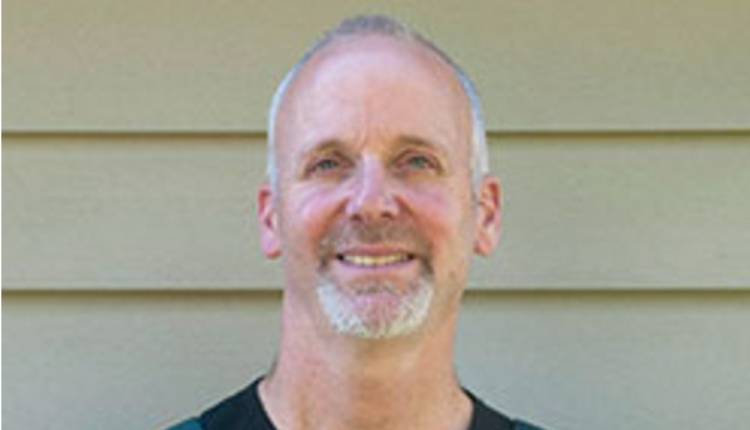
Compared to our beloved dairy cows, I rarely give compliments to the other large animals — the equines — that our vet team commonly encounters in our daily travels. It’s not that I truly dislike horses, but I show more earned respect for our “surrogate mother of mankind,” the dairy cow. To be fair, I do enjoy watching horses.
On rare occasions, such as our honeymoon riding stable adventure 44 years ago and on an elk hunting trip a few years back, I have developed an appreciation for these critters. Not being able to “catch” a ride back to camp tests one’s patience in a similar manner, I suppose, to bottle feeding a newborn Brown Swiss calf!
What impresses me most about horses is their anatomical ability to rest standing up. Horses, unlike cows, are equipped with a “stay apparatus” that allows them to remain standing upright for long periods of time. We all have observed a horse standing, seemingly half asleep, while one rear leg is cocked and relaxed.
The equine rear leg “locks” by positioning the patella (knee cap) over a bony ridge on the end of the femur. By activating the stay apparatus, along with strong suspensory ligaments, one rear leg supports most of the hind weight, allowing the opposite leg to rest. It appears a well-rested horse can flee on demand, often leaving the rider searching for the brakes.
This is not a feature in our bovine. A cow’s anatomy and mammary physiology favor lying time. Many stories have been told of “cow tipping” animals, pushing over cattle that were sleeping on their feet, but I think the “tipping” was enjoyed by the participants rather than the bovines.
As I visit dairy farms, my eyes are always drawn to standing cows. Why is that cow standing? What have we learned over the past two decades? For the milk cow, it’s not “time is money.” Rather, “resting time is money!”
Enough hours in a day
Lying time and a daily time budget are critical to the dairy cow. Researchers who spend considerable time in this area summarize the key points as follows: “Dairy cows at approximately 100% stocking density in freestall housing spend three to five hours per day feeding, consuming nine to 14 meals per day. In addition, they ruminate seven to 10 hours per day, spend approximately 30 minutes per day drinking, two to three hours per day outside the pen for milking and other management practices, and require approximately 10 to 12 hours per day of lying time.”
There are three important management considerations regarding time budgets:
- Approximately 70% of the cow’s day is spent eating or resting, so we cannot afford to get it wrong.
- There are only 24 hours in a day.
- Consequently, the cow only has, on average, 2.5 to 3.5 hours per day to spend outside the pen and away from feed, water, and stalls.
If we force the cow to spend more than about 3.5 hours per day outside the pen, it will need to give up something — typically eating and/or resting time. Every farmer should know how long their cows spend outside the pen. (Rick Grant, 2015)
We are seeing positive health and productivity benefits in herds using automated milking systems (AMS), which allow for less disruption and more “at ease” time within the barn. My first visit to an AMS dairy is still vivid in my memory. It was just so quiet, with many cows lying down and reduced competition at the feedbunk.
Standing causes problems
A standing cow is an at risk cow. We often see the standing cow at the feedbunk or resting standing up, with front feet perched in the rear of an occupied bed. Watch these animals more intently. Are they actively consuming a total mixed ration (TMR)? Or are they spending idle time sorting our well-formulated diet?
Adverse production and health events associated with altered feeding behavior, meal size, and speed are ever so common. Standing cows, especially those of higher social dominance (such as multiparous cows versus first-lactation heifers) may prevent other subordinate cows from getting a much needed meal. Remote video observations reveal the social interactions taking place in the pen environment.
Think for a minute about the list of common diseases and production concerns that are highly influenced by our cow’s environment and time budget. My list would include transition diseases such as metritis, ketosis, and displaced abomasums in the fresh animals. Also, we would include lameness, injury, poor fertility, impaired milk yield, and reduced milk components. Can you think of more?
Take a look around
How does grouping by parity influence your first and second lactation animals’ performance? Does our behavior within the barn affect their behavior and subsequent health/productivity? It obviously does.
Create your own “to do” list based on critical observations. Look for the standing animals, and ask why. Many opportunities exist to enhance space and rest requirements for our dairy cows today. Some are relatively inexpensive, including more frequent bedding, deep sand beds, adjusting the neck rail, bringing cows up to be milked in smaller groups, and grouping by parity. Other modifications may require sizeable investments, such as a new transition cow barn, AMS, extra stalls, more bunk space, or an enhanced ventilation system.
Oftentimes, the results are super fun to witness! I also enjoy seeing both you and your cows smile.
Wishing you all a safe and bountiful harvest season!











